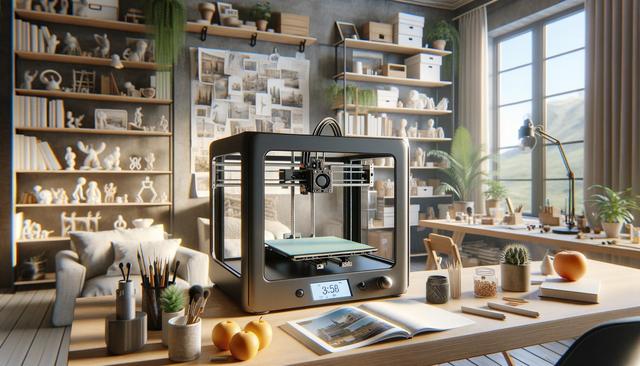Why 3D Printing at Home Is Gaining Popularity
Over the past decade, 3D printing has evolved from an industrial process into a resourceful tool for home users. What was once limited to high-tech labs and manufacturing plants is now available in compact, affordable devices suitable for personal use. Home-based 3D printing allows users to produce customized household items, toys, parts, and prototypes with ease. The growing accessibility of entry-level printers has contributed significantly to this trend, along with a rich online community that shares models and tips for beginners.
Factors such as user-friendly design, open-source support, and improved software compatibility have played a key role in making these devices more appealing. Parents use them for educational projects with children, while hobbyists enjoy the ability to tinker and create unique models. Additionally, small business owners and entrepreneurs have incorporated 3D printing into their workflows for creating product prototypes or custom solutions at minimal cost.
Key Features to Look For in a Home 3D Printer
When choosing an affordable 3D printer for home use, there are several important features to consider. These will impact the quality, ease of use, and overall satisfaction with your printing experience. Here are some aspects to evaluate before making a purchase:
- Build Volume: The maximum size of an object you can print directly relates to the printer’s build area.
- Print Materials: Entry-level printers typically support PLA or ABS filaments, but some support more advanced materials like PETG or TPU.
- Print Speed and Resolution: Look for a balance between print speed and layer resolution to suit your project needs.
- Ease of Setup: Beginner-friendly models often come semi-assembled or fully assembled, reducing the learning curve.
- Community and Support: A strong user community and responsive customer support can make troubleshooting easier.
Understanding these features helps buyers select a model that aligns with their priorities, whether it’s educational use, prototyping, or general crafting.
Popular Technologies Used in Home 3D Printers
Most home 3D printers use Fused Deposition Modeling (FDM), which works by melting and extruding thermoplastic filament layer by layer to build an object. FDM is favored for its affordability and versatility, making it a common choice for beginners and home users. Another technology gaining traction is resin printing, specifically using LCD-based Stereolithography (SLA) or masked SLA. These printers cure liquid resin using UV light to produce highly detailed models, ideal for miniatures or intricate parts.
Each technology has its advantages:
- FDM Printers: Generally more affordable, easier to maintain, and suitable for larger prints.
- Resin Printers: Offer higher detail but can be messier and require additional post-processing.
Choosing between FDM and resin depends on your intended use. For general-purpose printing, FDM is often sufficient, while resin may be better for artistic or high-detail work.
Cost Considerations and Ongoing Expenses
The upfront cost of a home 3D printer can range from modest to mid-level, with many capable models available at a reasonable price point. However, it’s important to factor in ongoing expenses to fully understand the cost of ownership. Filament or resin supplies, replacement parts such as nozzles or build plates, and occasional upgrades can add to the total investment over time.
Here are some common ongoing costs:
- Filament: A standard spool of PLA filament is relatively inexpensive and can last through multiple projects.
- Maintenance: Cleaning and replacing components like nozzles or belts may be necessary after prolonged use.
- Software: Many slicer programs are free, but some advanced tools may require a subscription or one-time purchase.
Being aware of these costs helps users plan their budget and avoid surprises after purchasing the printer.
Tips for Getting Started with Home 3D Printing
For those new to 3D printing, the learning curve can seem steep at first. However, with the right approach, beginners can quickly gain confidence and start producing successful prints. Start by choosing a beginner-friendly printer with clear instructions and a supportive online community. Many manufacturers offer starter kits that include everything needed to begin printing right away.
Other tips for a smooth start include:
- Begin with simple models: Start with basic shapes or pre-tested models to learn how your machine behaves.
- Use recommended settings: Stick to default print settings until you understand how adjustments affect results.
- Join online forums: Communities on social media platforms and dedicated forums are great for troubleshooting and advice.
- Practice maintenance: Regularly clean and check your printer to ensure consistent performance.
With practice and patience, home 3D printing can become an enjoyable and productive hobby that also enhances problem-solving and design skills.







